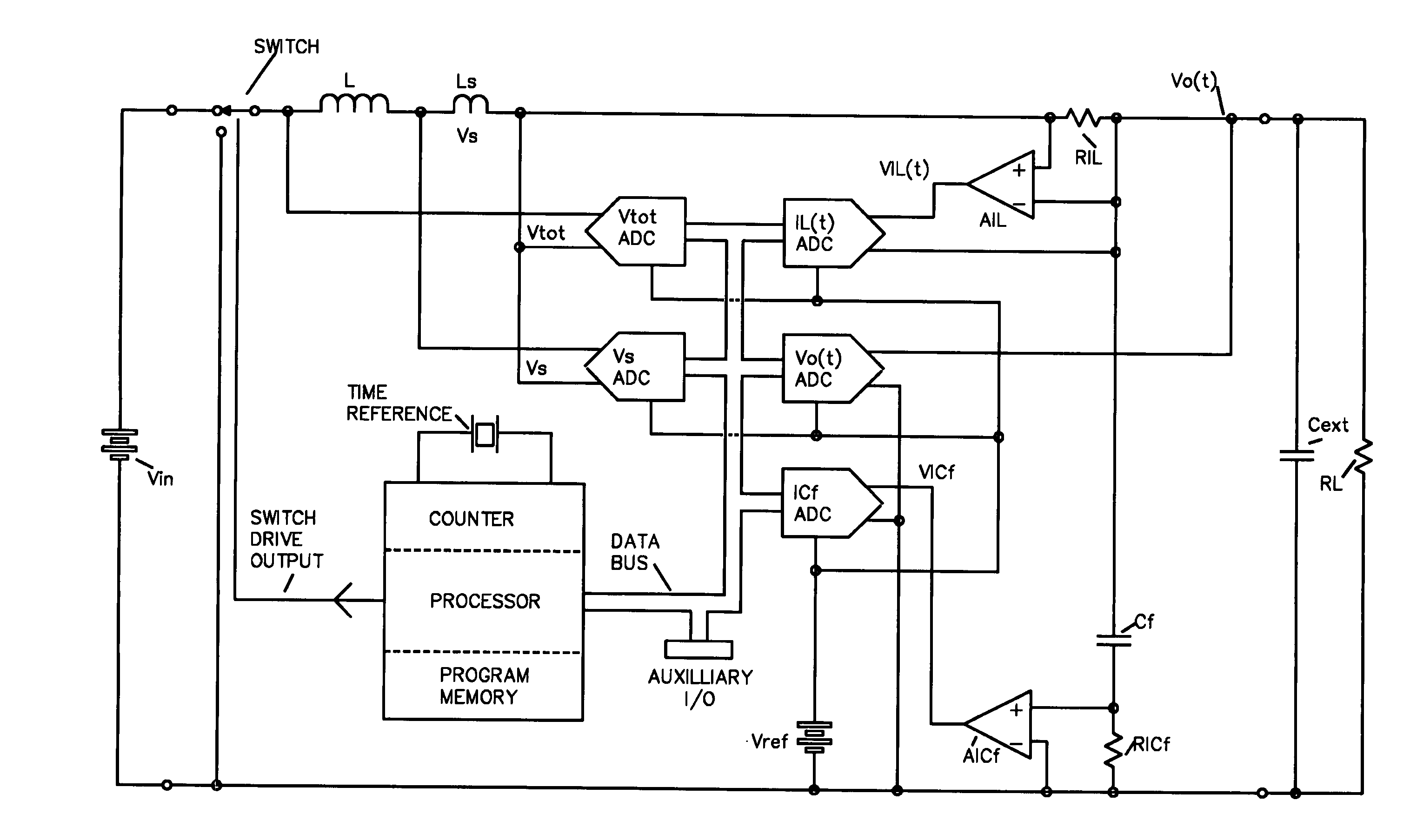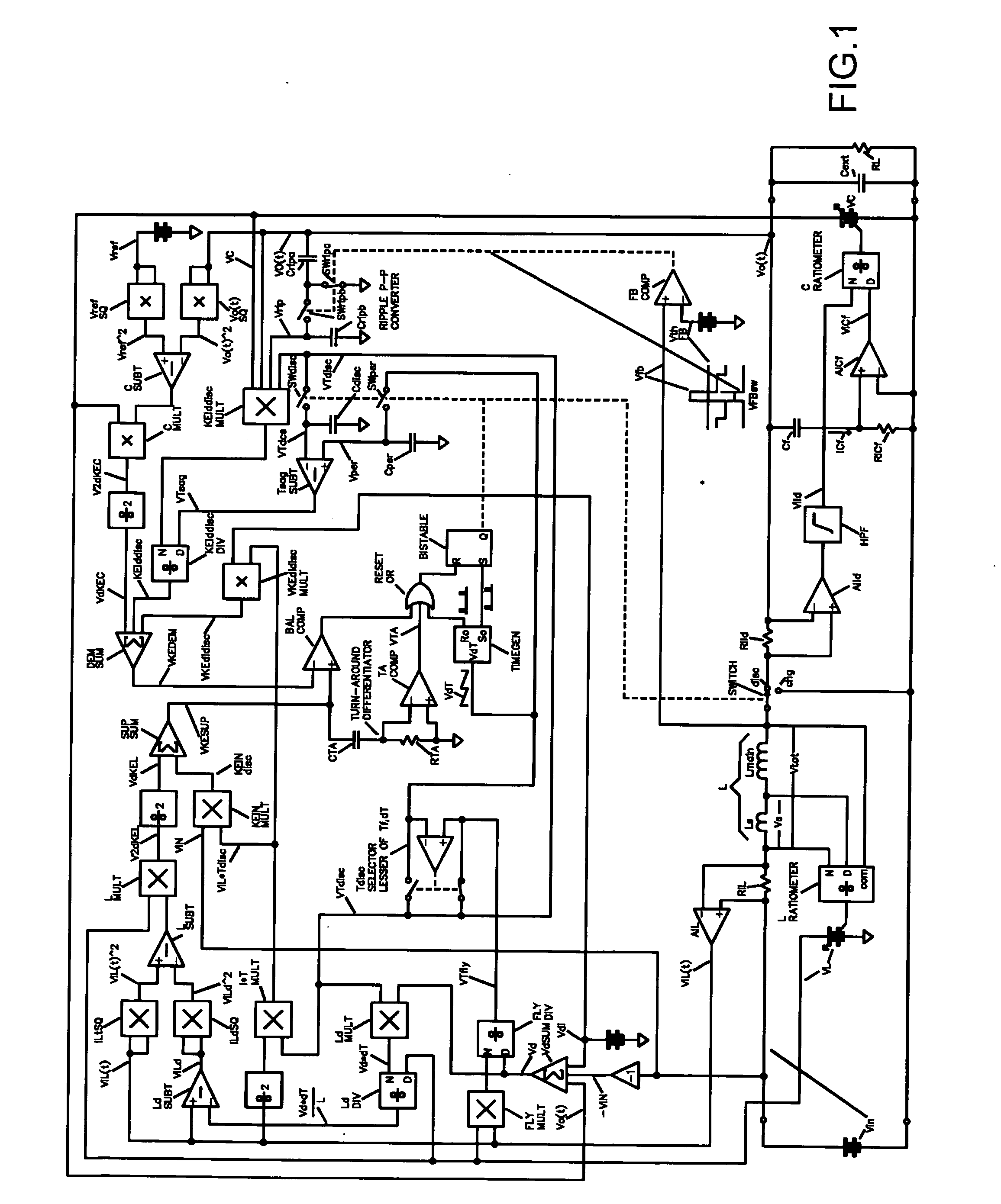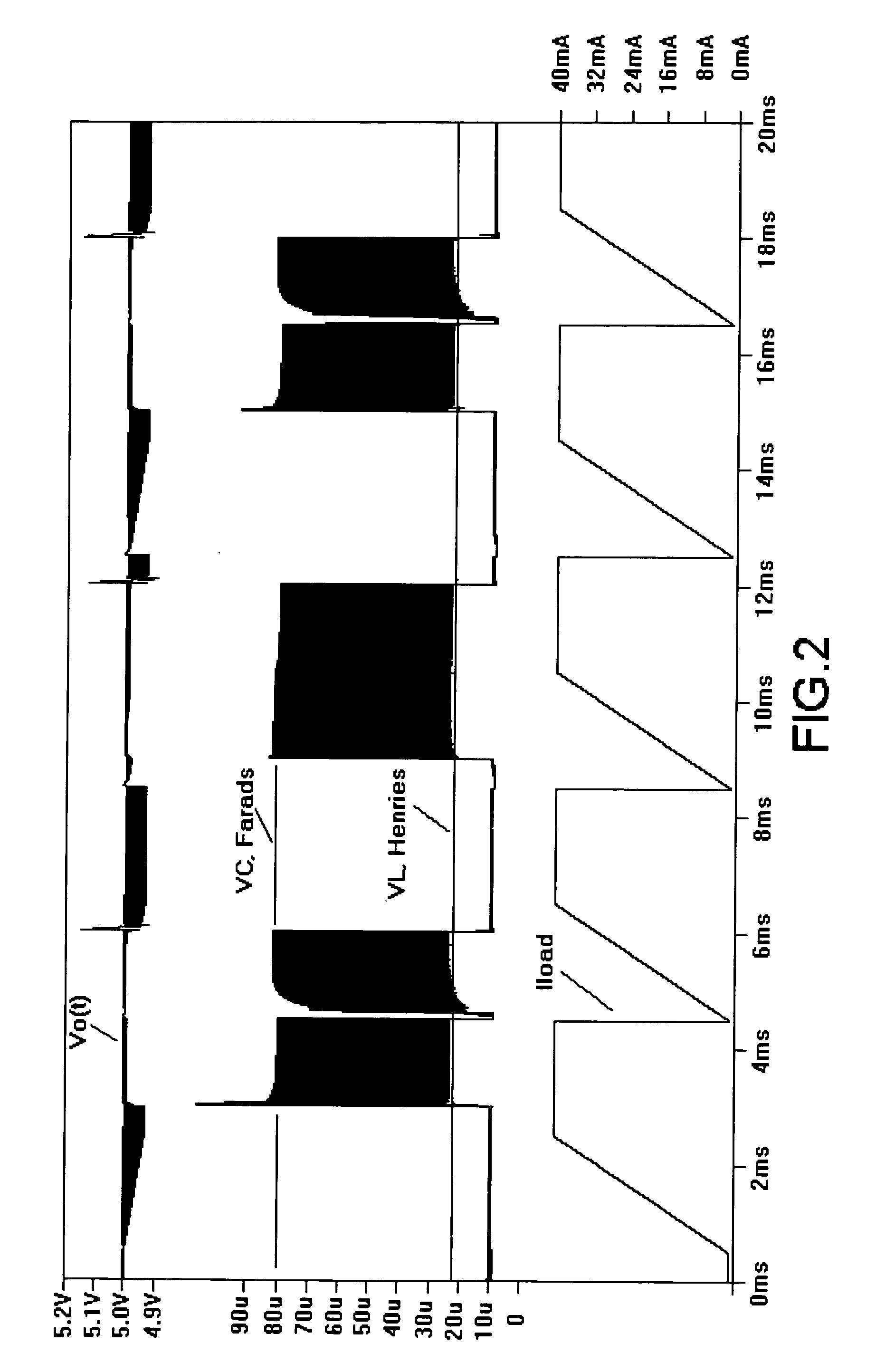Power conversion regulator with predictive energy balancing
a technology of power conversion regulator and predictive energy balancing, which is applied in the direction of electric variable regulation, process and machine control, instruments, etc., can solve the problems of adding noise, wasting power, and introducing additional inaccuracies in the output voltage of the output voltag
- Summary
- Abstract
- Description
- Claims
- Application Information
AI Technical Summary
Problems solved by technology
Method used
Image
Examples
Embodiment Construction
[0038] A power-conversion regulator including an input adapted to receive energy from an energy source, an inductive reactor for energy storage, a switch to charge said inductive reactor with a desired quantity of energy from said energy source, an output filter reactor for output filtration, and an output adapted to supply energy to a load. Said regulator may be used to regulate the output of a DC-to-DC power converter wherein both the energy source and the output voltage or current are substantially steady, or of an AC-to-DC converter wherein the input energy source is already cyclically undulant, and may be embodied either as an integral part of such converters or independently embodied. It should be noted that whilst commencing a chopping cycle by charging the inductive reactor and continuing so to charge it until it holds the predicted required energy incurs minimal prediction time and is simplest to implement, there is an alternate and less preferred method for practicing ener...
PUM
 Login to View More
Login to View More Abstract
Description
Claims
Application Information
 Login to View More
Login to View More - R&D
- Intellectual Property
- Life Sciences
- Materials
- Tech Scout
- Unparalleled Data Quality
- Higher Quality Content
- 60% Fewer Hallucinations
Browse by: Latest US Patents, China's latest patents, Technical Efficacy Thesaurus, Application Domain, Technology Topic, Popular Technical Reports.
© 2025 PatSnap. All rights reserved.Legal|Privacy policy|Modern Slavery Act Transparency Statement|Sitemap|About US| Contact US: help@patsnap.com



